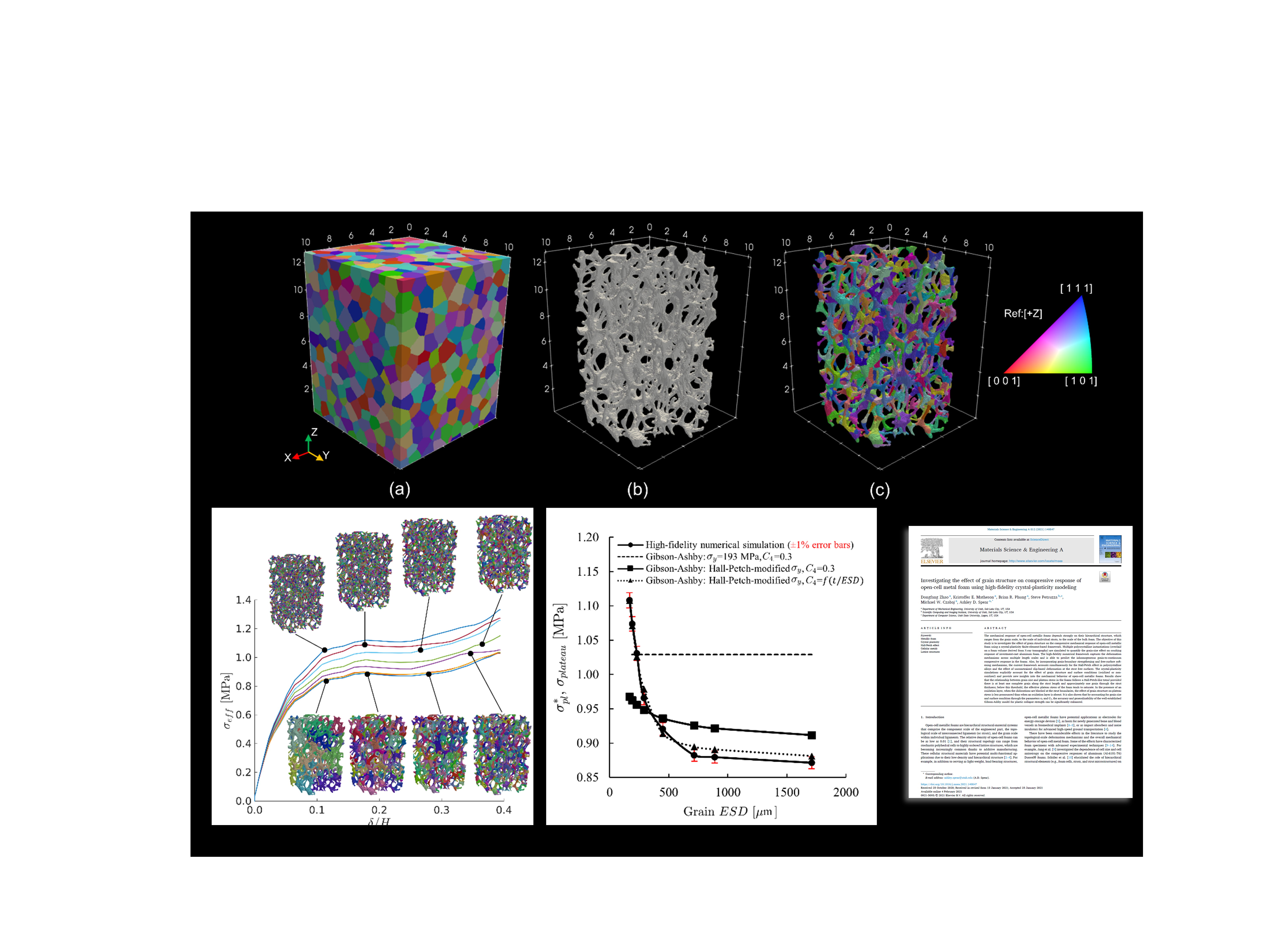Abstract:
The mechanical response of open-cell metallic foams depends strongly on their hierarchical structure, which ranges from the grain scale, to the scale of individual struts, to the scale of the bulk foam. The objective of this study is to investigate the effect of grain structure on the compressive mechanical response of open-cell metallic foam using a crystal-plasticity finite-element-based framework. Multiple polycrystalline instantiations (overlaid on a foam volume derived from X-ray tomography) are simulated to quantify the grain-size effect on crushing response of investment-cast aluminum foam. The high-fidelity numerical framework captures the deformation mechanisms across multiple length scales and is able to predict the inhomogeneous grain-to-continuum compressive response in the foams. Also, by incorporating grain-boundary strengthening and free-surface softening mechanisms, the current framework accounts simultaneously for the Hall-Petch effect in polycrystalline alloys and the effect of unconstrained slip-based deformation at the strut free surfaces. The crystal-plasticity simulations explicitly account for the effect of grain structure and surface conditions (oxidized or nonoxidized) and provide new insights into the mechanical behavior of open-cell metallic foams. Results show that the relationship between grain size and plateau stress in the foams follows a Hall-Petch-like trend provided there is at least one complete grain along the strut length and approximately one grain through the strut thickness; below this threshold, the effective plateau stress of the foam tends to saturate. In the presence of an oxidation layer, when the dislocations are blocked at the strut boundaries, the effect of grain structure on plateau stress is less pronounced than when an oxidation layer is absent. It is also shown that by accounting for grain size and surface condition through the parameters σy and C4, the accuracy and generalizability of the well-established Gibson-Ashby model for plastic collapse strength can be significantly enhanced.
Authors: Dongfang Zhao, Kristoffer Matheson, Brian Phung, Steve Petruzza, Michael Czabaj, Ashley Spear
This material is based upon work supported by the National Science Foundation DMREF program (CMMI-1629660). The support and resources from the Center for High Performance Computing at the University of Utah are gratefully acknowledged.
Access article: 2021_Zhao_MSEA

